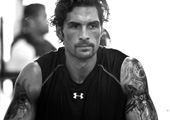Create a program customized to your age, gender, and skill level
Every athlete has different strengths and weaknesses. If you are going to improve your off-ice fitness, then you need a program customized for your needs. For example, a 12-year old hockey player would not be expected to do a complex exercise that an NHL player would do in their training program. As you use the HockeyOT.com program and improve your fitness level, the training will progress with you and become increasingly challenging. All members also get to choose dryland training for in-season and off-season so that they can get the most out of the training. In-season training takes into account that you will also have energy demands from on-ice practices and games.
Use techniques that will rapidly improve your on-ice performance
Players are almost never on the ice for a full 15 minutes. And even while on the ice, they are not necessarily moving their legs the entire time, and may not have the puck on their stick for longer than a minute or two. HockeyOT’s dryland training program is designed to mimic these same patterns you use while playing in a game. By recreating these movement patterns in your off-ice workouts, you can rapidly improve your on-ice performance in as little as 2 training sessions per week.
Monitor your progress with benchmarks
Your progress is benchmarked throughout the dryland hockey training program, allowing you to see measurable results in Speed, Endurance, Agility and Power.
Some of the key identifiers for hockey-specific benchmarks are:
| KEY IDENTIFIER FITNESS PARAMETER | ||
|---|---|---|
| Lateral stride hop | Faster first 3 steps/acceleration | |
| Medball side throw | Shot power | |
| Medball chest throw | Upper body strength | |
| Lateral agility test | Change of direction | |
| Barbell deadlift | Lower body strength | |
| 30 meter sprint | Skating speed | |
| 1-mile run | Endurance |
By defining these exercises as athletic standards, Hockey Online Training can provide measurable results which indicate improvement over time. Feeling better is one thing; seeing measured feedback indicating exactly how much you have improved is another. What’s more, based on the data Chad Moreau has collected from years of training athletes from all levels of play, you can see how you measure up physically to other athletes of a similar age and/or experience level.














